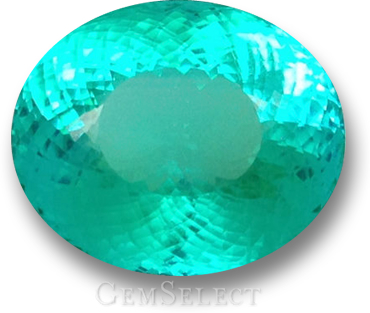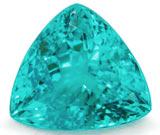Paraiba Tourmaline Gemstones
Shimmering with an otherworldly glow, Paraiba tourmaline is one of the most captivating and rare gemstones in the world. In this article, we will explore essential Paraiba tourmaline information, including its fascinating origin, unique characteristics, and the exceptional rarity that makes it a true marvel of the mineral world.

Paraiba Tourmaline from GemSelect
The rare blue-green Paraiba tourmaline was unearthed in 1989 in the Brazilian state of Paraiba by a committed miner named Heitor Barbosa. After more than 5 years of diligent work at the Mina da Bathalha, Barbosa finally discovered the first samples of this exceptionally scarce tourmaline. These gemstones displayed a striking blue-green hue that had never been witnessed in any other gemstone before. They seemed to emit a luminous, neon-like glow, even in their raw form. Further analysis revealed that this distinctive effect was attributed to the presence of copper and manganese.
The Paraiba tourmaline was first introduced to the gemstone world at the annual Tucson gem show in early 1990. It caused an immediate sensation. Top specimens sold for as much as $3,000 per carat. At the time this price seemed ridiculously high for a tourmaline; today, ironically, it seems astonishingly low.
The market demand for Paraiba tourmaline was so strong, and the supply so limited, that it became almost impossible for gem dealers to buy stock. However, in 2001 some similar copper-bearing blue-green tourmaline was discovered in Nigeria, though the color saturation was not as good as the Brazilian material. Then in 2005, a third find was made, this time in Mozambique. The Mozambican material was found in a range of colors, from green to blue-green or violet, with a color similar to the Brazilian Paraiba. In fact the Mozambican paraiba is often cleaner than the Brazilian (which tends to be heavily included) and is found in larger sizes.
 |
The new finds of copper-bearing tourmaline led to a vigorous debate in the gemstone community about whether the term "Paraiba" should be used for the African copper-bearing tourmaline. Some argued that the Brazilian and African material were chemically similar, if not identical. Others argued that "Paraiba" was a location name and should be reserved for the Brazilian material only. Thus some gem dealers started to use the term "African Paraiba".
In 2006, the LMHC (Laboratory Manual Harmonization Committee) agreed that "Paraiba" should refer to a type of tourmaline, and not indicate a geographic origin. The term "paraiba" should not be capitalized (as it is in the name of the Brazilian state). Therefore, the term "paraiba tourmaline" may now refer to gems found in Brazil, Nigeria, and Mozambique, and in other places where new deposits of copper-bearing tourmaline may be found in the future. |
